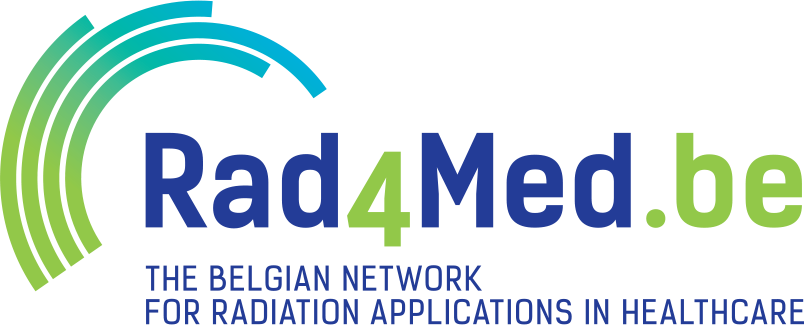The center of Molecular Imaging, Radiotherapy, and Oncology (MIRO) includes a GMP-certified lab and a radiochemistry team that carries out the synthesis of radiotracers labeled by positron emitter isotopes, which are involved in positron emission tomography (PET). These isotopes are: fluorine-18, carbon-11, nitrogen-13, produced in an IBA 18/9 cyclotron, as well as zirconium-89, produced in an IBA Cyclone 30.The team’s role is initially logistic with the synthesis of radiopharmaceuticals known for their potential in PET imaging.
Research and clinical axes & activities
Taking advantage of the increasing importance of molecular imaging in radiation oncology, MIRO develops several competences and fields of expertise, like target volume delineation, respiratory motion modelling, automatic image processing and segmentation, reference dosimetry and Monte Carlo simulations, as well as dose painting and adaptive radiotherapy. Radiobiological aspects are investigated in parallel, with a focus on tumor radio-response and metabolic profile, radiosensitization mechanisms, and potential benefits from hadron therapy.
The MIRO platform for preclinical studies comprises experts in biology, radiobiology, and molecular imaging. As to the equipment, the platform includes its own animal facility, an autoradiographer, an irradiator, a SPECT-CT, and micro-PET, all suitable for small animals. The platform also benefits from the proximity of a radiochemistry laboratory and a cyclotron.
The radiopharmaceutical tracers that are routinely prepared are: [18F]-FAZA (hypoxia), [18F]-FLT (proliferation), [18F]-fluorocholine (phospholipids in the cell membranes), [18F]-NaF (bones), [18F]-FPA (lactate) and [18F]-FHBG (expression of the herpes simplex virus type-1 thymidine kinase (HSV1-tk) gene), [11C]-methionine (cerebral tumor), and [11C]-acetate (liver). All of them are used in pre-clinical studies for in-vivo characterization of different pathologic models. [18F]-FAZA is prepared in GMP conditions and used for clinical trials.
Application fields in radiotherapy:
MIRO is driven by the will to improve the efficacy of cancer treatment by radiotherapy, while individualizing it to each patient and reducing its side effects. For this purpose, our research develops and validates automatic methods of target delineation on PET images, advanced techniques of image registration to permit adaptive treatment, and Monte Carlo simulations of dose delivery in IMRT or proton therapy.
Application fields in preclinical research:
MIRO works on the evaluation of the determinants of tumor radioresponse, and the influence of tumor microenvironment. MIRO has developed several PET tracers for the assessment of tumor metabolism (EF3, FAZA, FPA,…), which were validated in murine tumor models.
Application fields in radiochemistry and radiopharmacy:
For pre-clinical studies, all tracers are prepared with remote control systems that are designed in-house and driven by NI LabVIEW software. GMP syntheses are performed in clean rooms by fully automated systems that are developed and piloted by NI LabVIEW software.
Ongoing projects/partnerships/collaborations
MIRO closely collaborates with the services of radiotherapy and nuclear medicine of all UCLouvain-affiliated hospitals (Saint-Luc Brussels, Saint-Pierre Ottignies, Mont-Godinne, etc.). MIRO also participates in several international multi-centric studies in head and neck cancer, as well as lung cancer.
MIRO develops several research projects with industrial partners, both in photon and proton therapy.
In collaboration with the Unit of Pharmacology and Therapeutics (FATH) and the Magnetic Resonance group (REMA) at UCLouvain, MIRO investigates how the tumor microenvironment influences tumor progression and response to treatment.
Current projects also include the influence of HPV (human papillomavirus) infection on the response to radiotherapy of oropharyngeal, head and neck carcinomas.
Beyond logistical activities, the radiochemistry team is also involved in fundamental research. A first topic focuses on the production of high specific activity 89Zr (T 1/2: 78,4 h)
for monoclonal antibodies labelling. A second research area is the synthesis of silicon analogues of [18F]fluoromisonidazole in order to develop new radio-labelled compounds
for the detection of tumor hypoxic domain.
